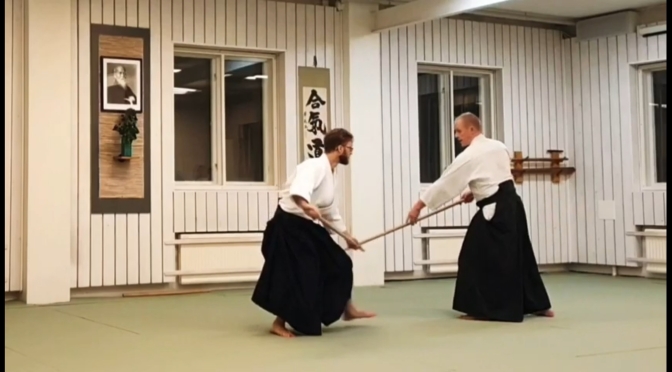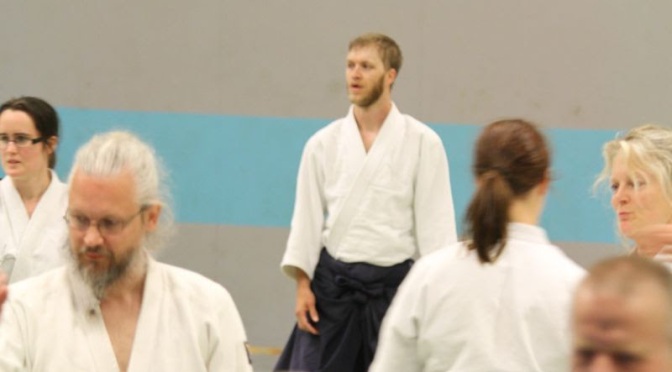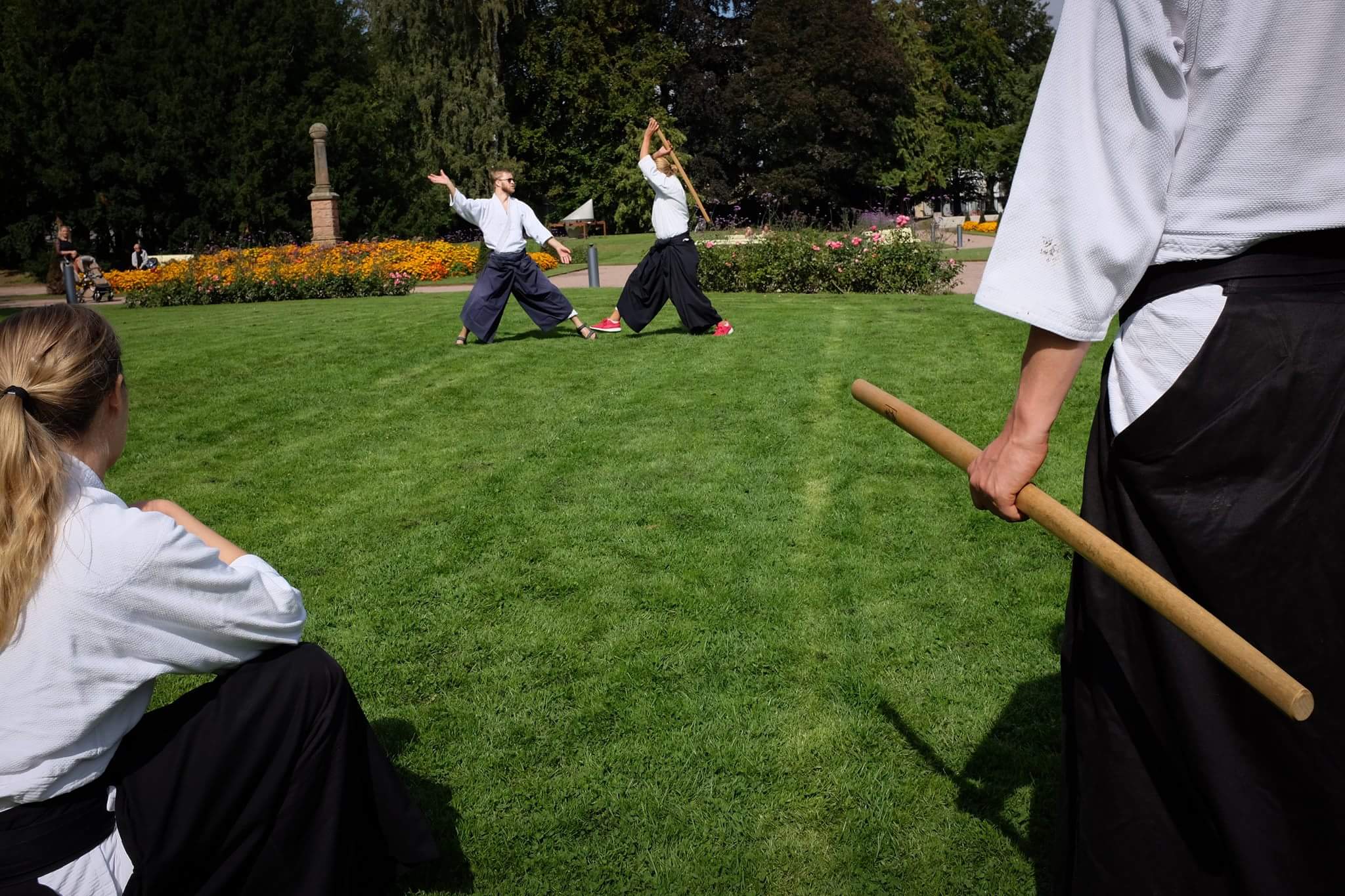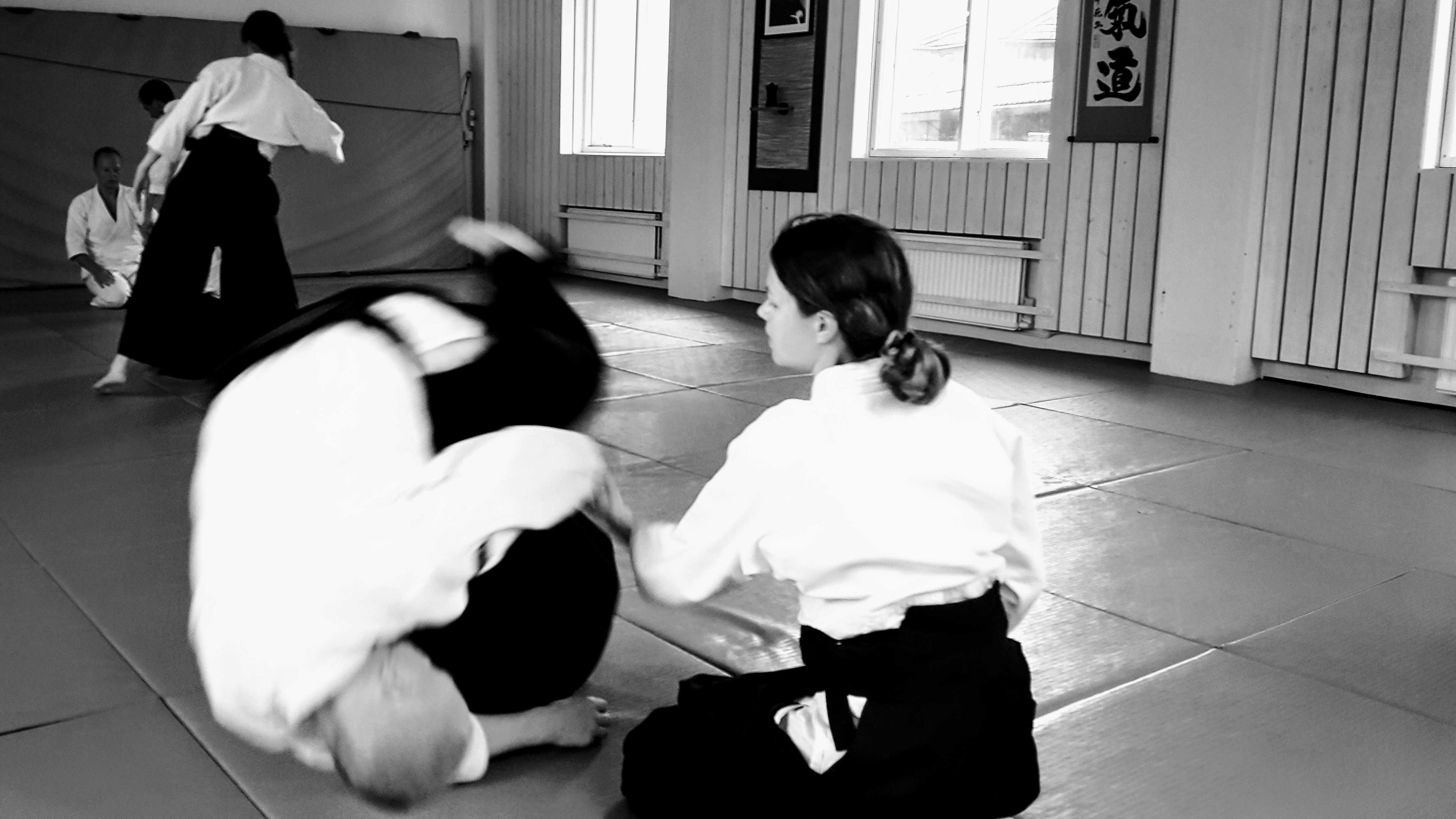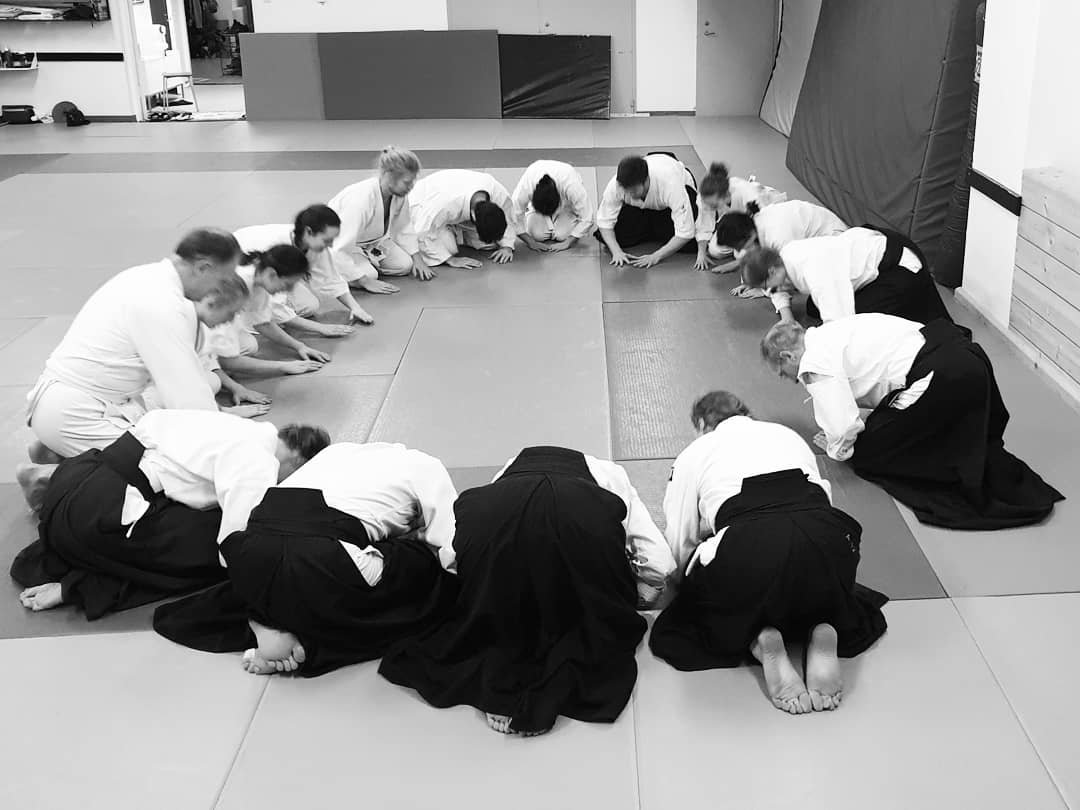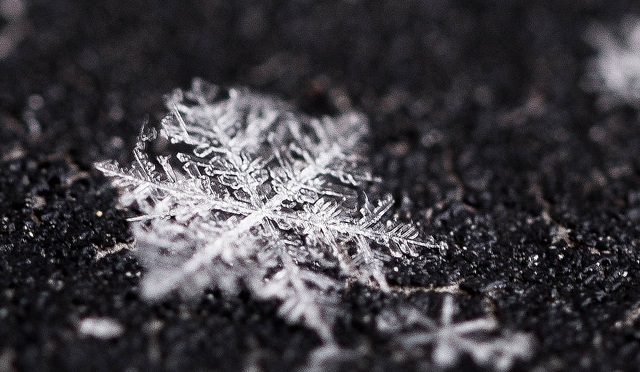Aikido 6 degree black belt and professional aikido instructor Malory Graham recently relocated to Gothenburg, Sweden, from Seattle, USA. She had successfully been running Seattle Aikikai for several years until the pandemic hit late 2019. As Lund isn’t too far from Gothenburg I invited her down to visit us in Lund Aikido Club and teach a couple of classes. While she was here I seized the opportunity to have a sit-down in a cozy but busy café for “fika”, and to talk about life and aikido. I was especially eager to get her perspectives on the effects of the pandemic on the one hand, and the toxic culture that can be present in aikido and organizations on the other.
The early years: around the world in 6 years
J: Hi Malory. It’s so nice to have you here in Lund. When did you move to Sweden?
M: It’s literally been two months.
J: Where did you grow up?
M: Ah… that’s a hard question for me [laughing]. This could be the whole interview! I’m a foreign service brat. My parents were government, working in the foreign service, and I was born in Liberia, Africa. I lived in Libya after that, then Thailand, and then Washington DC.
J: How old were you when you moved to the USA?
M: That was age 6 or 7… and then a big chunk of me growing up was in New York City. My dad worked for the United Nations so I got all of my middle school up until High School in New York.
J: Where in New York City was this?
M: I lived in Chelsea1. This is in the 70’s and I lived by a diner that unfortunately disappeared but it was an institution, The Empire Diner, people know that one for sure, and I literally passed by New York Aikikai all the time but I didn’t do aikido then.
J: After that it was Seattle? The whole family moved to Seattle?
M: Yeah.
J: Did you stay there until now?
M: No, I went back east for college, to a place right out of Boston, that’s where I started Aikido, at Hampshire College.
Finding aikido outside of Boston
J: Take us through that. How did that start?
M: I never thought about myself as someone who would have just walked into a martial arts dojo, but… aikido was attractive because Hampshire college was very much a hippie school, it was all about the eastern philosophy, and they did a special class that was basically a zen and Japanese cultures’ class but also had a little bit of aikido in it. I got my taste of it because I was really more interested in Japanese philosophies.
J: Had you heard about aikido back then?
M: No, I hardly knew anything about martial arts honestly.
J: This is when?
M: 1988 is when I started. It was at North Hampton Aikikai. Paul Sylvain sensei was the teacher there. He was a pretty well known aikido teacher but he taught a college class. It was Chiba 2 sensei’s style, so that was my first five years of aikido, style wise.
J: How long was that for?
M: I discovered it during my last year-and-a-half of college, and then I moved back to Seattle

Seattle years: conflict leads to a new beginning
J: How did that transition go? Had you already fallen in love with aikido at that point? Were you smitten as they say?
M: I was totally smitten with aikido! I think I moved back to Seattle, and the first thing I did was find a dojo. It was also the very beginning of my time where I realized that there was this whole [aikido] network.
J: So, in Seattle, the place you went to train at, were they connected, in some way, with the place you started with back east?
M: Yeah, it was Chiba style, and at that time it was actually Bruce Bookman, who was doing Chiba style at that point.
J: When was this?
M: Now we’re talking 1990. I stayed with that dojo for a good five years. I came up through him, and got my shodan [black belt] from that. But the defining characteristic of my aikido trajectory is that I find myself torn between the aikido practice-that I love! and having to choose between my values, or my loyalty.
J: What happened after that?
M: So, that’s where in choosing my values it made me have to leave Bruce’s dojo and start a dojo.
J: You had reached some form of senior level, like shodan or more I guess…
M: Nidan3
J: Ok… so Bruce Bookman was he still under Chiba then?
M: During the time that I was with him he left Chiba and went back to Yamada sensei4.
J: Then you started your own thing. How did that go?
M: [laughing]
J: I see… were you by yourself?
M: No, actually the entire dojo basically split.
J: A bit of a conflict?
M: It was a huge issue! He [Bruce Bookman] lost our respect so there were about fifteen of us who started this dojo, together, and out of it maybe about five of us where yudansha5 at the time. But… we were very idealistic.
J: You were all thinking: “We are going to do this as a collective!”
M: Yeah, and you know, we had also seen an abuse of power, which is why we left, right, and everyone around us was like:
“You’re not gonna last 5 minutes!”
Right? But I also had come from a background of social justice and organizing, and so I’m kind of happy to say that the dojo now has been in existence for 25 years.
A dojo of their own: The ideal years
J: What was the year you opened the dojo?
M: 1997.
J: …and It’s still in existence today, although you just left it. How were those first years? Can you describe what it means to open a dojo back then?
M: Those were the ideal years! You know when you go back and think about what your favorite years in aikido were. The pioneer years were great because we wanted to do it differently, you know, and we did! We had a whole committee, and we were run by committee. No one was going to be called “sensei”. We all folded our own hakama6. We were so in love with aikido, and were going to seminars together all the time. It was a great time! We built the place, you know, completely by ourselves. No one had any money. We were right out of college.
J: You definitely see that still, I would say. There have been quite a lot of discussions lately about what makes a dojo grow, and although it’s not true everywhere, I would say that you still see that effect from opening up a new dojo, those early years with that passion together.
M: Yes! It’s the barn raising aspect of it! It’s really important. And, you know, it’s a little bit sad, but we just dismantled our dojo for the pandemic, and there was a really sweet moment of pulling up all of the two-by-fours in our raised mat. We had had all of us sign the underside of the mats when we had first built it, so to see all those signatures… you know?
J: Oh, I can only imagine! Can you say something about the years after the… honeymoon, as it were? Did it turn out as expected or not? Did you grow?
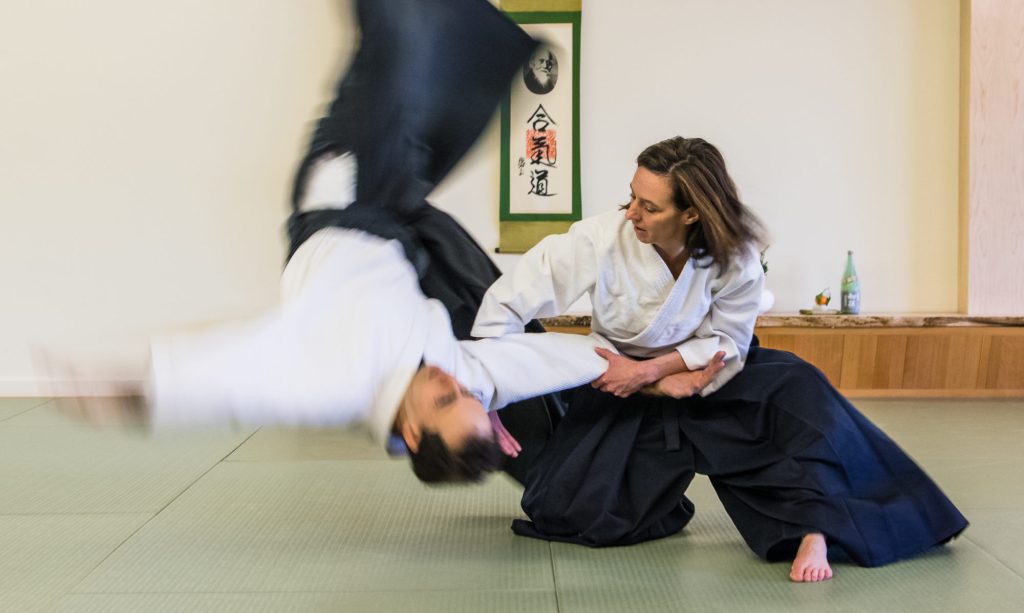
M: We definitely had to figure a lot out. I mean, we were also collectively run with no one being a chief instructor, and in a lot of ways it is kind of amazing that we… lasted, because I do think that really having one person in charge of the dojo makes sense, as a structure. But, definitely, it’s always been important to me that even if you have a chief instructor, that you have a board that governs, you know, the actions of that chief instructor. I will never have a dojo that doesn’t have that structure. That’s, to me, the value that is so important, so that someone just doesn’t go unchecked, right? Like, that’s one of the problems in aikido.
J: I agree.
M: So, that’s really important. We also see it in aikido right now too. In the dojo we became kind of top heavy because so many of us wanted to teach. It was suddenly kind of exciting. We all got to teach, we had just been students, right? and so we realized that we had some issues with people who just started teaching and didn’t want to take any one else’s classes. So we came up with rules: “You can’t teach unless you also train”.
J: That’s a sound way of thinking about it.
M: That’s a really good rule to have, and I think it’s one of the really big problems of aikido dojos right now, is that teachers don’t train.
J: Very true. There’s definitely that thinking that “I’m a teacher now!”, or “I don’t like what the other ones are doing”
M: Yeah, but it’s also something within a dojo, that if you’re the chief instructor of a dojo, everyone thinks it’s really weird if you take one of your student’s classes, and… I made a point of doing that, and you’ll get out of shape if you don’t train yourself!
J: I agree, and I think as an instructor there is no person easier to fool than yourself, especially in a collaborative art such as aikido, so we need that check. And I feel that just taking classes completely neutral, for the pure joy of it, or the workout of it, I think is really a vaccine against that.
M: Yes, what you just said, keeping the pure joy of training for yourself, when you’re an instructor, it’s hard I think.
Late 2019: A storm on the horizon
J: I want to look at, if it’s ok with you, the year 2019. Two things for me, and in some parts of the aikido world, happened. Obviously the pandemic hit us, or started to show up in the fall of 2019, and we will talk about that in a second, but the other event happened also in the late fall of 2019 and, at least to the outsiders, initially took place on social media. There was a group who called themselves, at least in the beginning, USAF7 women’s coalition, I believe, and there was a petition that many people signed. Within a short time there were a lot of various kinds of outcomes from that… which affected many people. It certainly affected me and my relationship with quite a number of people, many of whom I had considered to be dear friends for a long time. Can you explain what happened?
M: Maybe I’ll take it back a step further too. I have always been, in my other professional life, championing girls and women in sectors they normally aren’t allowed into. I was a filmmaker and I started a film school just for girls because Hollywood was missing a female voice. There were so few female directors. So I took that into my aikido world and made one of the first films about women teachers in aikido with the idea of promoting women… I was just noticing that women actually teach differently than men, and they aren’t given the spotlight.
J: What was the title of this movie? Was this the “Holding the…”
M: “Holding up half the sky”. So gender had always been in the back of my mind, and there were a couple of women’s camps that were organized over the years, and generally women didn’t feel like there was a big need for them, but the couple that happened were really important because it was the first time women came together and realized that there are some things that are not quite right in our aikido world.
J: Would you say that these discussions were the direct result of these seminars?
M: They were informal conversations at these seminars like:
“…I would never put up with this kind of sexism at my workplace or in my regular life, but somehow because it’s aikido I shut up about it…”
I had gone to a couple of years of those camps, and then there was one year that I had to miss, and it was that year that this conversation about the women’s petition came up.
A petition unleashes a storm…
J: So take us through what, from your perspective, happened those months at the end of 2019 and maybe early 2020.
M: I think that something that is important to know about this petition was that a lot of women who were much more high ranked and more entrenched in aikido-and I’m going to put myself in that pool too-I’m not proud of it but I would say that I (and they) would not have recommended a petition, because I just knew the inner workings of the aikido organization, especially the USAF. I just knew that it would not be taken seriously. My worry was that no one was going to take it seriously. But, some women who weren’t as… jaded… as I am, were like:
“…The time has come, we need to do this… no one is talking about these things… we’re just talking about it amongst ourselves… we talk about it in the dressing room, but the time has come!…”
Like, many men just don’t know that this is an issue, that there’s harassment that happens, that women don’t advance to higher levels, that there is not representation [in boards and committees].
J: Can you explain to the reader in short what the petitions said or stated.
M: Literally when you read it, it’s not a revolutionary piece of paper at all.8 It basically is a statement of facts saying: Gender equity doesn’t exist in aikido, and we like for this to be an issue that we can talk about openly.
J: …talk about it and study it properly and openly.
M: Yes, It didn’t even have any demands, you know! It did point out the fact that there weren’t any women at the highest level of teaching and at technical level instruction.
J: It just pointed it out.
M: I mean, if I’m walking down the street and someone was asking me to sign a petition that basically said: “Gender equity doesn’t exist in the workforce.” You would be like: “Yeah of course! Duh!”
J: There’s nothing strange about that.
M: Right. To me there was nothing strange about this petition, and I was like: “Ok… great!”, so I signed it. I didn’t even think twice about it.
J: So what happened? Did you expect the fallout and storm that it ultimately unleashed?
M: I had no idea that this piece of paper was going to have the effect that it had. In a lot of ways I think it was good, because what it did was that it brought the underbelly of an aikido organization to the forefront. People could no longer deny that if a petition like that felt so threatening, where the choice was to kick people out and to intimidate them not to sign it, then clearly we actually DO have a gender issue [laughing].
J: No matter how you frame it, in the end… the way that people acted and behaved as an actual response or reaction to this, clearly highlighted the fact that… “Well, there you go!”
M: Yeah… I mean, the fact that people were being intimidated and afraid to sign it, and then kicked out for signing it.
J: Some people signed then retracted it.
M: Yes, retracted! that made me go: “Oh my god, this feels like the McCarthy era! Now we have just taken this to a whole other level in an organization that I can no longer be a part of..”
J: Did that mean that you or your dojo left that organization?
M: Yes, we had been a USAF organization since our inception in 1997, and I had served as the USAF treasurer on the board of directors for many years. So I knew all the players. I knew what was going on, so it meant, for me, disagreeing with many of my friends. I believe their sympathies were certainly for gender equity, but they felt they had to be loyal and they started villainizing the women’s coalition and that’s when it really turned ugly.
J: Yeah… As I said before, it greatly affected me as well in that I could no longer support a dojo I had trained in so much, and where I had formed strong personal bonds with people, because I just couldn’t accept how some of them were treated. And then of course we had the pandemic, at the same time! People had to face stop going to the dojo, and then this also happened!
M: …and to be honest, I have to say that the timing of the pandemic, in all it’s horrible consequences, it was a little bit of a relief to me, because I had just quit this organization that had been my home, my family for years, and to have been in a position where I suddenly was going to be made to feel unwelcome going to seminars, or not really sure where my place was…
J: It gave you breathing space in a way.
M: It gave me breathing space because suddenly no one could do aikido. It wasn’t like: “I can no longer comfortably go to any of these seminars because of what happened”. There were no seminars to go to! So in a way it was actually really good to just have the space, and to have people to kind of sit and think about what had happened, rather than suddenly being like: “…these different camps that are being so angry at each other…”. I think the space has been good for not just me.
The pandemic brings social back into social media
J: What did you actively start doing? I mean, I went nuts! both from the fallout from the petition, as I talked about before-it was like some trauma, perhaps similar to how it can feel like from the fallout of a relationship or conflict in a family, but trauma nonetheless-but then on top of that the pandemic hit, and the stress around that. My personal response was to go crazy on social media. I started to make videos immediately. That was my attempt to… escape, or… heal, I think. “I can’t do these other important things so I will do this thing I can instead”. Did you do something similar?
M: I think I did very similarly, too. I think a lot of people will take a trauma experience and implode. My preference is to explode.
J: Yeah… At least in the beginning.
M: Yes, then the energy wears off. But I felt like, at that time, I wanted to put so much energy into my dojo, keeping my dojo alive, figuring out how to have an online presence, and keeping people active in their practice. Asking questions like: “Is aikido bigger than what we’re doing on the mat?” became really important to me. And then, you have to remember at the same time, we had the whole racial trauma that happened, in the United States in particular.
J: So three things coinciding at the same time.
M: The pandemic, the gender petition, and then Black Lives Matter, all at once! In a lot of ways it was great because it was the first time I took my out-of-the-dojo values and got to sync them together with my aikido values. Because I was also then no longer constrained by an organization that was going to tell me what I could or could not say. So, it felt like a really open time for me to start exploring aikido outside of my federation, and suddenly, you could take an online class in, like, the Czech Republic! I was invited to teach classes and take classes all over the world. It was amazing!
…it was the first time I took my out-of-the-dojo values and got to sync them together with my aikido values
J: It was amazing. The connection was, particularly in the beginning, to me at least, very important as well. The feeling that the connection was there, and maybe even expanded on was real.
M: It was nice too because I have been really lucky to travel all over the world for aikido, so part of it was me really being able to connect with people. Like, I have a good friend who runs a dojo in Australia, and a good friend who runs a dojo in London. All of my friends around the world came and taught classes for my dojo, and we would never have done that before, so that was super cool. But it also made me realize that dojos are microcosmos that often haven’t reflected on gender equity or racial equity, and have so much to learn, in terms of being open welcoming spaces. Especially as we see our numbers plummeting. And to me what is so funny is… that the bigger problem for aikido is that we’re not going to exist, we’re going to evolve out of existence, because our numbers are so small, so if you have an opportunity to increase your demographics by getting more women, and more people of color, why would you not be open to look into that!? [laughing]
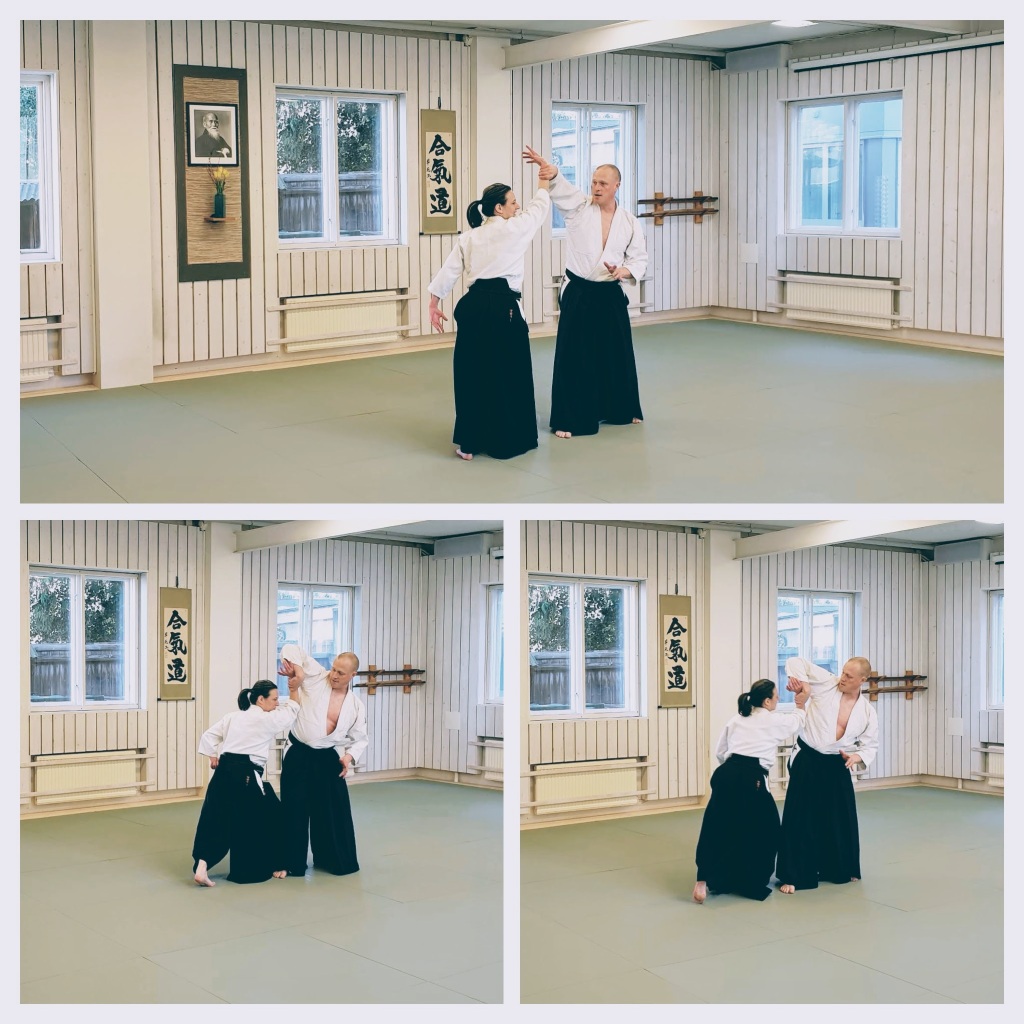
J: It’s a matter of survival honestly.
M: And so many interesting issues and topics started to get talked about on social media. And I realized, too, that the voices online on social media about aikido, the biggest one that dominates is the male voice of “aikido vs. mma” and that is such an absurd conversation. And I’m like:
“How do we start changing that conversation so that that doesn’t become the dominant feed?”
It’s really hard to do.
Aikido: A martial art with toxic culture… or is it?
J: I agree. I could talk for hours about social media, I find that so fascinating, but I would like to circle back somewhat to the topic of culture, or cultures, in a dojo and within aikido. The two main ones I feel would be interesting to discuss are the male dominant culture, on the one hand, and the hierarchical culture on the other. Both are or have been naturally very present in a Japanese martial art such as aikido. What are your thoughts and experiences of these and how do you see them possibly change for the better or otherwise?
M: You know, in a lot of ways coming up within the USAF there is a sense of an in-culture and an out-culture. Even before the gender petition, people joked about it being a mafia. Like a hierarchy. You were in the inner circle, or not. And… I benefited from that, I have to admit. For years I got to be in that inner circle, and so I didn’t really see how damaging it was, but when I’m looking now from the outside, I’m realizing, well, that dynamic, and that culture is what created the possibility for the gender petition and the fallout to happen, right? So, it’s a system that I benefited from, but that I also can see was very exclusionary. And now we’re finally talking about:
“What is an inclusive dojo?”
and to me that is such an important question because, I mean, people’s lives are hard, right, and when they choose to study a martial art and walk into a dojo, you are leaving your life. You’re leaving all your relationships. Maybe you have had a terrible time at work. Then you want to come to a place where you have a sense of belonging. You want to be validated. You want to be seen. You want to have an experience that you can transform who you are with a group of likeminded people. And when you walk into a dojo, and that belonging is there, then you’re like:
“Ah! I have found it!”
J: So much positive reinforcement right there.
M: So positive! But then when it becomes an inclusion / exclusion thing, when that culture starts to develop, I don’t know, I guess it’s a human nature, but part of it is the hierarchical nature of aikido and the egos that are involved in it, I think it’s only natural that there becomes a “other vs. me” that happens. I have tried for my 20 plus years of running a dojo to not have that culture exist. I think I actually have done a pretty good job, having an incredibly welcoming dojo, but the other side of that, what I’ve paid for, is that I’m not taken seriously.
“…She has the friendly dojo, she has the dojo where everyone cuddles, and where they feel really good about themselves, but there’s not really good aikido happening there…”
Then with the pandemic I had taken two years off, also made me start to really look at the question: How do we define what good aikido is? Because, I mean, part of me bought into that attitude myself. I’m like:
“Oh yeah, well maybe my aikido is not that good, but I do know how to run a dojo, and I know how to make people feel good, and I know how to build a community…”.
But then I was, like: “Why have I adopted that?”
J: Did people tell you this?
M: No but I felt it, because I took on that culture. It’s prevalent. So, it has been an interesting time for me to unpack that, for sure, because I wouldn’t change a thing, you know.
I still think that the culture that we can create in a dojo – a culture of belonging but also one that is challenging and demanding – I think it can happen.
But, yes, there is a certain level of elitism in aikido, but I just laugh at it at some point, because I’m like: “We’re not solving cancer here! We’re doing a leisure activity…” and the fact that people take it so seriously, and become so elite and want to be the best aikidoist in the world… I’m like:
“I’d rather be a decent person in the world, really, and I’d rather have a dojo where we’re creating decent people”[laughing].
The way forward: looking inwards?
J: Yes! So with your own experience of opening up a dojo, for a specific reason like we talked about before, and with the experience of the pandemic, the toxic culture, the fallout from the petition, the MeToo movement-inside and outside of aikido-could you give your own idea of a roadmap forward to create a less toxic culture in existing dojos?
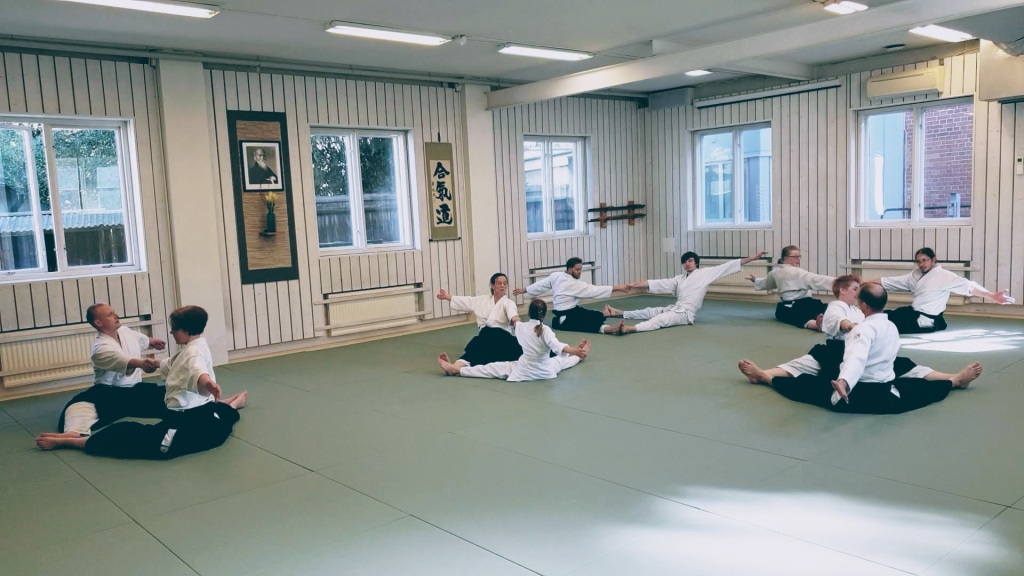
M: Oh, that’s a tough one. I can start to be really positive about what I think that new roadmap would look like, but I have to really acknowledge the fact that all of those things that just happened, that we have all experienced over the last two years, the pandemic, the MeToo, the Black Lives Matter, the gender equity petition, Trumpism… I can’t lie and tell you that all of that didn’t have a really detrimental effect on my relationship to aikido. There was a part of me that was like:
“Is it really worth it, to keep up with this community, to keep up with this practice?”
I think all of us at some point have to acknowledge that, it shook us to the roots. And I’m still, to be honest, struggling with that. That question isn’t something that easily goes away, now that we’re taking off our masks. I mean, I was one of those “I’m in aikido for life”, and that question really hit a deep chord in me.
J: Yes, me too.
M: I think we have to ask ourselves those tough questions:
“What is keeping me going to the dojo?”
For my own practice, but also certainly for those running a dojo! What keeps me volunteering all my time to keep the doors open… for ten students? What I see as a positive way forward is to actually own those questions and accept them on a deeper level, not just intellectually, but work on trying to figure out how to work those out on the mat. If we have learned anything from the practice, it’s how do you not just intellectualize it? How do you take it and put it more in your body? And see if you wake up and you want to show up. What is that feeling? Or the times you don’t want to show up, and really pay attention to that. I used to not pay attention to it.
J: I love that. A lot of it comes down to:
“What is aikido to us?”
It is really something different for most people, and I want to end with the question: What is aikido to you?
M: Well, I’m going to give you a philosophical answer, and then an answer that has emerged out of the pandemic. My old answer has always been that, in this life, if we have a sense of being on this planet to evolve, emerge, or experience something, that we then grind ourselves against a stone to make ourselves better. And I have always said that aikido is the stone that I have chosen to grind myself against. You choose one thing, and it doesn’t matter, you choose one thing and you do the same motions every day and you grind yourself. I could have chosen cooking or anything else. I chose aikido. But, coming out of the pandemic and being a little bit less…[laughing]… philosophical… I’ve been like:
“Oh! Actually, I need to work out!”[laughing]
The dynamic motion that you get in aikido, it gives you so much more than just a yoga practice, or just a weightlifting practice. You actually are moving your body in so many different ways. In a lot of ways I actually think it’s an ideal workout. So if there is no other value except that it’s actually a really great system for moving and keeping the body healthy, like, that’s a pretty good reason for aikido to exist!

Text and Photo by Jakob Blomquist
Footnotes:
- Chelsea is an area on the Manhattan lower west side, between 14th and 34th street.
- Kazuo Chiba, b. 1940, d. 2015. A direct student of the founder of aikido, Morihei Ueshiba and his son Kisshomaru Ueshiba. Known for his focus on strong and dynamic forms and basics, and his work with sword and staff (Jo). He moved to the UK 1966 and taught aikido there until 1975. Later he moved to San Diego, California, USA, where he taught aikido between 1981 and 2008 as a shihan, first within the United States Aikido Federation, and later as the head of the organization Birankai.
- Nidan: 2nd degree of black belt
- Yoshimitsu Yamada, b. 1938, a direct student of the founder of aikido, Morihei Ueshiba, and his son Kisshomaru but also cites Koichi Tohei as one of his influences. Yamada is known for his clear and dynamic basic form. Yamada moved to New York City, USA, 1964 and soon took over as chief instructor of the dojo New York Aikikai.
- yudansha: Those who have black belt level.
- Hakama is a type of traditional Japanese pleated pants with very wide legs, nowadays worn in some Japanese martial arts such as iaido, kyodo, and aikido. In some dojos the instructor’s hakama is commonly folded by a student after class.
- The United States Aikido Federation, USAF for short, was formed in 1974 around the group of US dojos under the four shihans Y. Yamada, K. Chiba, M. Kanai and A. Tohei. All except Y. Yamada have since passed. As of this writing Yamada acts as the sole Chief instructor and a Chief Technical advisor of USAF.
- The Petition: Support Women in the United States Aikido Federation



